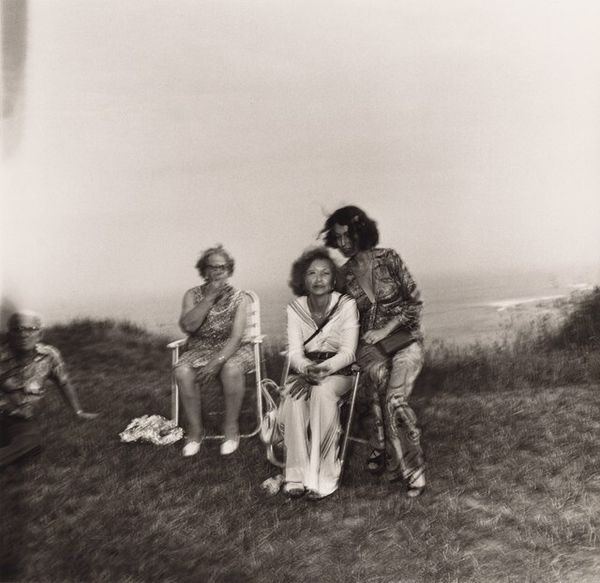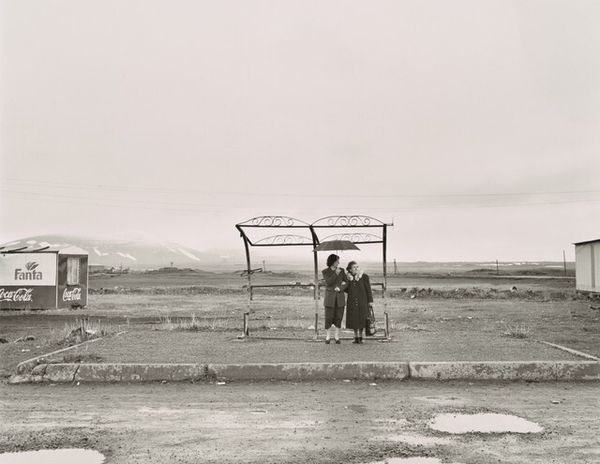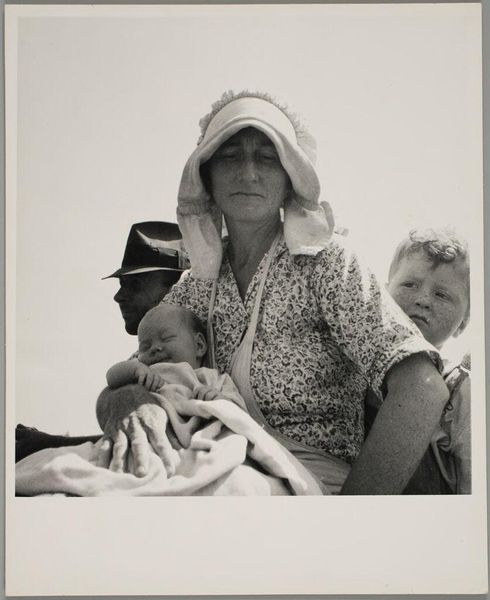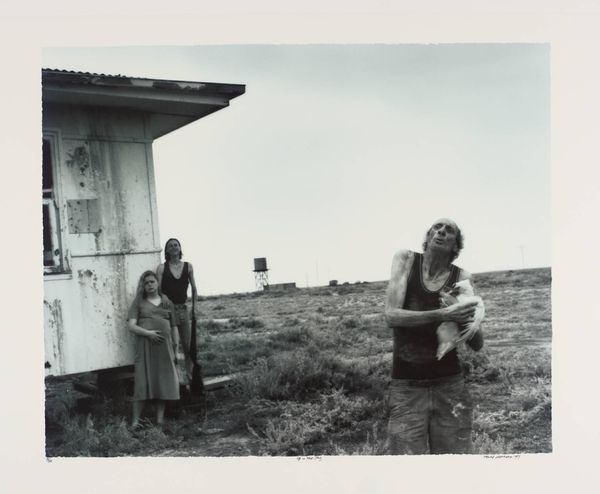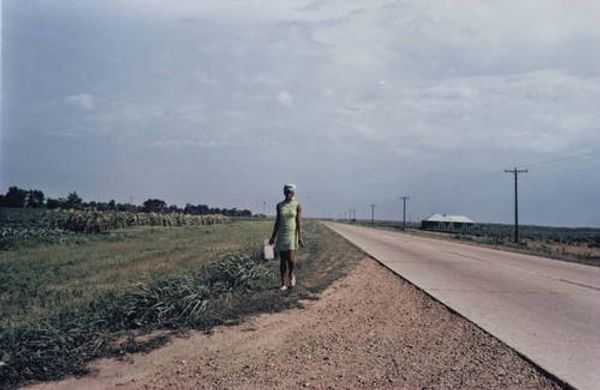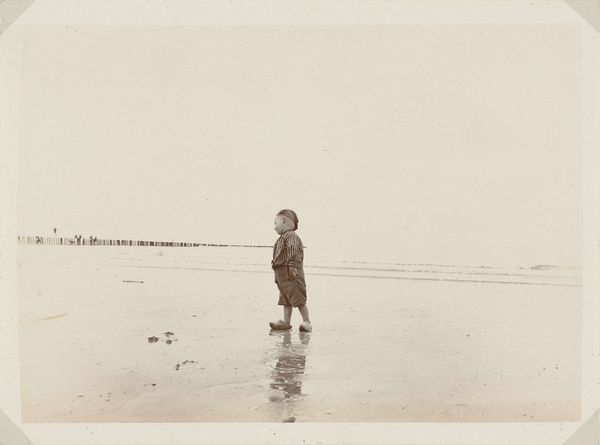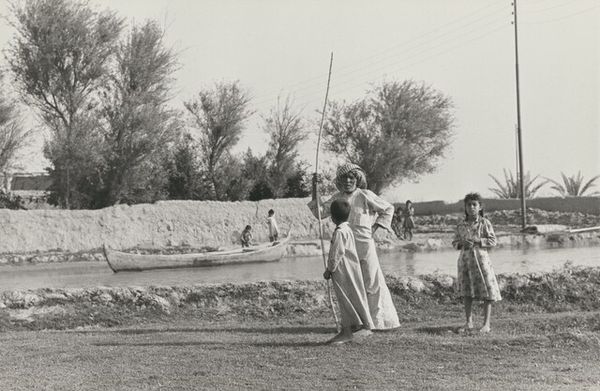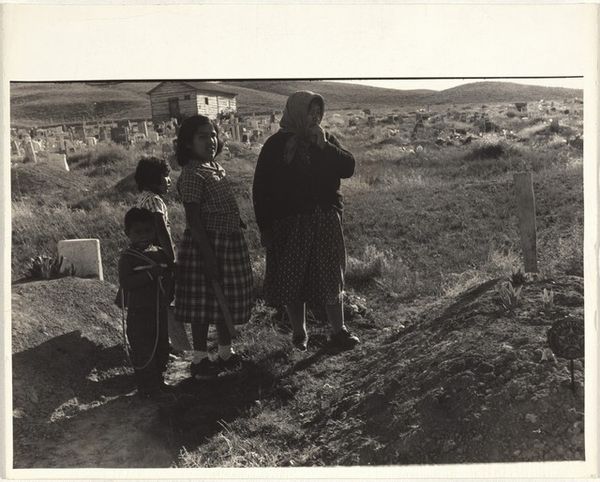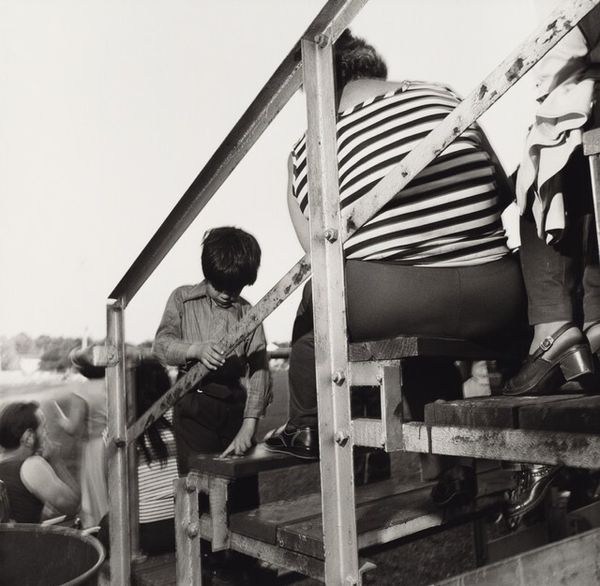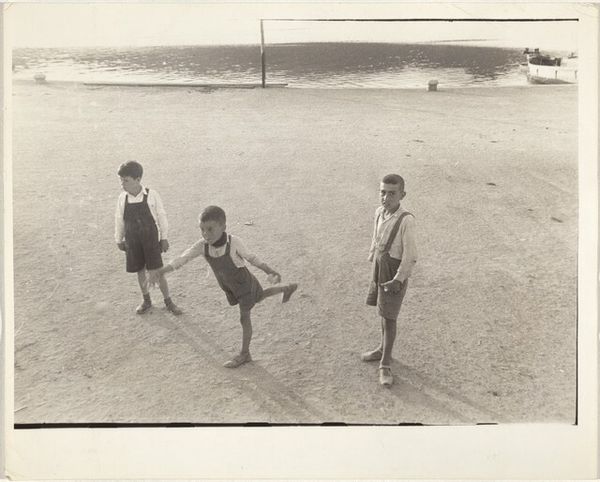
Hitch-hiking from Joplin, Missouri, to a sawmill job in Arizona. On U.S. 66 near Weatherford, western Oklahoma August 12, 1938, printed c. 1960s
0:00
0:00
photography
#
portrait
#
landscape
#
social-realism
#
street-photography
#
photography
#
modernism
#
realism
Dimensions: image: 24 × 19.5 cm (9 7/16 × 7 11/16 in.) sheet: 25.4 × 20.32 cm (10 × 8 in.)
Copyright: National Gallery of Art: CC0 1.0
Curator: Dorothea Lange's stark photograph, "Hitch-hiking from Joplin, Missouri, to a sawmill job in Arizona. On U.S. 66 near Weatherford, western Oklahoma," taken on August 12, 1938, captures a family at a pivotal moment during the Great Depression. Editor: Wow, they look so defeated, and hopeful all at once. You feel it immediately, don't you? That stretch of empty road, their meager possessions... it tells a whole story before you even know the title. There's a real resilience radiating, too—the mother flexing her arm... Curator: The image became a symbol of the struggles endured by many families displaced by economic hardship and drought. Lange's work with the Farm Security Administration was crucial in raising awareness of these issues, aiming to secure support through powerful visual narratives. Editor: Absolutely. It's propaganda, isn't it, but from a deeply human perspective? Not some cold, political agenda, but just… witnessing. The little details get me: the dad's worn clothes, the baby clinging to him, the little girl's somewhat quizzical look like she knows it all. They become archetypes of an era. Curator: Her work very much aimed at engaging with public sentiment and influencing policy during a crisis. Lange utilized realism to document subjects truthfully and compassionately. The placement of the figures, with a vast landscape emphasizing their vulnerability. Editor: It's almost a landscape *portrait*. I see a triangle of weary faces against the great void, but they’re linked, anchored together, by these connecting grass roots beneath them. They are very carefully positioned in the frame; she has control over everything we look at, even if this photograph looks like a casual capture. Curator: Indeed. Composition was key to its effect. And the work undeniably contributed to shaping public perception, affecting policy around assistance programs during this dark time. The narrative, although centered on their plight, shows great resolve. Editor: Which remains potent today, doesn't it? Those journeys, the dust, it all repeats in a new shape. Makes you think about migration, what people carry and what is stripped from them, even if the faces are new. It is an image burned in our cultural memory of hardship, determination, and humanity's enduring strength. Curator: Precisely. It invites continuous reflection.
Comments
No comments
Be the first to comment and join the conversation on the ultimate creative platform.
